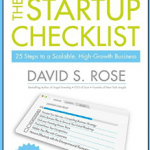
Each year, the number of new businesses spikes in January as the start of a new year seems like the most natural time to begin a new venture. Whether you’re just starting out or are a seasoned entrepreneur, run through this startup checklist to better understand the steps needed to make your business legit.
1. Make Sure Your Business Name is Legal
You dreamed up the perfect name for your new company, but is it legally available for you to use? Before you get too far with your branding and order your signage, you’ve got to make sure that your business name isn’t conflicting with an existing business. Name conflicts are actually one of the primary reasons why many LLC/corporation/DBA applications are rejected by the state or county processing office.
Fortunately, running a name search isn’t complex process and you don’t need a lawyer to help you. Perform a trademark search to check the availability of any name in the U.S. By checking to make sure your name is available early on, you’ll have peace of mind knowing that you won’t find yourself at the wrong end of a trademark dispute sometime down the road.
2. Pick Your Business Structure
Unless you specifically create a formal business structure with the state, then you’re operating as a sole proprietor by default (if you’re a single owner). While the sole proprietorship may be the right choice for certain situations due to its simplicity, you should consider this move carefully. With a sole prop or general partnership, there’s no separation between the business and business owner. This can keep things simple, but if a business is sued or can’t pay its bills/debts, the business owner(s) are personally on the line.
When you create a formal business structure with the state, you are separating yourself from the business. Popular structures include the Limited Liability Company (LLC) and Corporation (either S or C Corporation). A little research will help you determine which structure is right for your situation. For example, the LLC is great for people who want liability protection (i.e. to protect their personal assets if their business is ever sued) but don’t want a lot of paperwork or administrative formality. The C Corporation is better for companies who plan to go public or get VC financing.
You can also take the self quiz to determine the best business structure for your business. It’s fast.
3. Register Your Business Name
If you decide to form an LLC or corporation, that will automatically register your business name and you can skip over this step. But if you’re not quite ready for a formal business structure and stay a sole prop, then you’ll need to register your business name by filing a Doing Business As (DBA), also known as the Fictitious Business Name. This step lets the public know who’s behind a company, ensures that you’re legally able to operate your business under that name, as well as stops anyone else from using your business name in your state.
Keep in mind that while a “Doing Business As” application protects your name in your state, it doesn’t stop anyone from using the same name in the other 49 states. You can, however, file for trademark protection to protect your name and brand in all 50 states.
4. Apply For a Federal Tax ID Number or Employer Identification Number (EIN)
The IRS tracks your company’s transactions via a Tax ID number. Think of it as a social security number for businesses.
If you’re operating as an LLC or corporation, your business is required to have a Tax ID number and you’ll also need one to open your business bank account.
If you are a sole proprietor, you’re not obligated legally to get a Tax ID number, but it’s smart practice. With a Tax ID number, you won’t have to give out your personal security number to every client or vendor you work with.
Read how to apply for an EIN at the IRS website.
5. Apply For Any Necessary Permits
Depending on what kind of business you have and where you live, you may need to get business licenses from the state, county, or town. Examples include: zoning permit, sales tax license, permit from the health department, professional licenses, or a general business operation license. Keep in mind that a tattoo artist, daycare center, or restaurant will be more tightly regulated than a copywriter or business consultant.
You can read more about business licenses and permits here. If you are not sure about business licenses that may be required, check out our free tool called the “Business License Compliance Package.” You can find out all the licensing requirements and applications for your particular business in the state and county where you are conducting your business.
6. Brush up on Employer Laws
If you are planning on hiring an employee for your business, you need to clearly understand your legal obligations as an employer, including payroll and withholding taxes, unemployment insurance, anti-discrimination laws, OSHA regulations, workers’ compensation, and wage/hour requirements. If this is your first time hiring an employee, it might be wise to speak with an employment law professional or consultant to fully understand all the legal intricacies.
The new calendar year is an ideal time to turn your dreams into reality by becoming your own boss and starting a new business. But in the excitement of your new venture, don’t forget to get your legal foundation squared away. And if you’ve been running a business for years without thinking about these things, now’s the time to catch up! These activities are fundamental to your business’ long-term health and to the security of your finances.
We hope this startup checklist gets you on the right path. Here’s to a prosperous and productive 2014!
Legal checklist photo via Shutterstock




